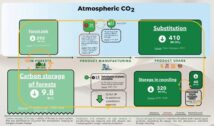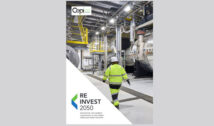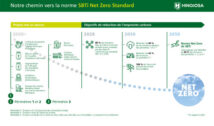
Yet they tend to be more expensive than their supermarket equivalents and therefore a more aspirational offering – and they may not be as beneficial to the environment as they first seem.
Damage to products is the prime concern – packaging protects goods on a journey, saving shoppers valuable pennies and keeps items fresher for longer, too.
The environmental benefits to this longer shelf-life are too big to ignore: the Food and Agriculture Organization of the United Nations (FAO) estimates that the carbon footprint of food waste is 3.3. billion tonnes of CO2 equivalent per year.
Then there’s the practicalities. By considering the concept of canned tuna going tin-less in the back of a lorry, it becomes apparent that this is impractical and unlikely.
As well as hundreds of tins rolling around without a box to store them, highlighting that packaging must still exist somewhere in the ‘zero-packaging’ supply chain.
Cardboard packaging, naturally, can be recycled again and again, and using circular design principles help optimise every part of its journey.
Zero to hero
Unfortunately, bad packaging, including the complexities of how to dispose or recycle it, has led to this knee-jerk reaction of trying to get rid of packaging altogether.
Instead, we need to consider viable alternatives: lower-impact packaging – made from the least possible amount of sustainable material, and a hybrid approach of re-use and recycling, is key.
Importantly, the majority of the environmental impact of a package is decided already at the design phase.
By considering a product’s specific supply chain upfront, packaging designers can design out waste and pollution and make sure materials are kept in use by optimising recyclability, material use, potential to replace problem plastic, reuse and more.
Circular economy
To achieve a truly circular economy, we need to make attitudinal changes at a societal level – encouraging people to make both re-use and recycling habitual.
For this change to happen, businesses need to make it easy and convenient – encouraged by legislators who ensure from the outset that bad packaging cannot be part of an environmentally viable supply chain, rewarding or penalising as appropriate.
For example, whilst re-use should be encouraged, putting it in practice can be much harder for consumers, even if their intention is to be eco-conscious. Instead, businesses need to provide re-useable and recyclable alternatives and the government needs to ensure the infrastructure is in place to turn the waste produced into new materials.
For example, clothes retailers are starting to bridge that gap between desire and efficiency –making their e-commerce packaging designed so it is also used as the return packaging – making it easy and convenient for customers to re-use.
Our relationship with packaging is changing and over the last year, packaging more than ever has been recognised as a critical part of the supply chain, showing resilience to transport and protect essential goods even in the most challenging of times.
The goal should be to produce and use packaging designed using the least possible amount of sustainable materials, and keeping materials in use as many times as possible through reuse and recycling.

































